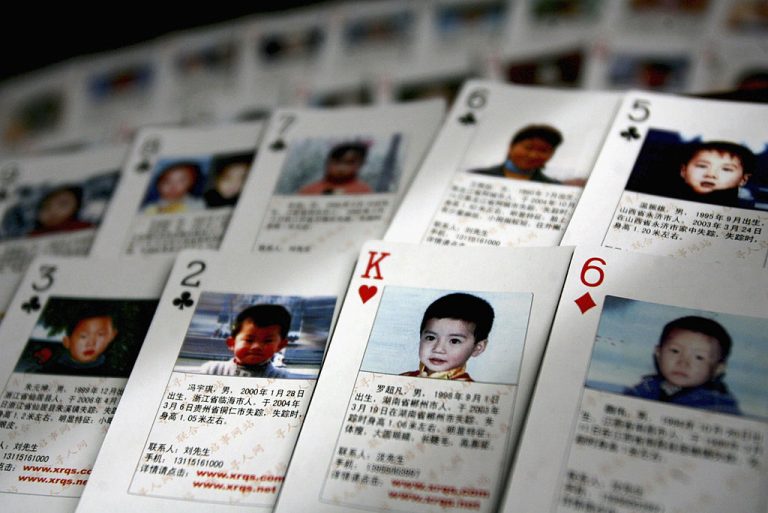Human trafficking, particularly of women and children, continues to plague mainland China with hundreds of thousands of children going missing annually. Many of those missing are suspected of being forced into manual labor and prostitution or of being exported out of China to work as sex workers and cheap laborers in foreign countries.
The annual “Trafficking in Persons Report” published by the United States identifies China as a “Tier 3” country with regard to human trafficking.
A “Tier 3” country is one “whose governments do not fully meet the TVPA’s minimum standards and are not making significant efforts to do so.”
The “2019 Trafficking in Persons Report” brings focus to China’s global role in human trafficking, stating that “The Government of the People’s Republic of China (PRC) does not fully meet the minimum standards for the elimination of trafficking and is not making significant efforts to do so.”
How it’s accomplished
The 2019 report states that “Well-organized criminal syndicates and local gangs subject Chinese women and girls to sex trafficking within China. Traffickers typically recruit them from rural areas and take them to urban centers, using a combination of fraudulent job offers and coercion by imposing large travel fees, confiscating passports, confining victims, or physically and financially threatening victims to compel their engagement in commercial sex.”
Success
You are now signed up for our newsletter
Success
Check your email to complete sign up
China’s internal migrant population is the key demographic that traffickers prey on. In China, this population is estimated to exceed 180 million men, women, and children. Trafficked individuals from the rural population in China are forced to work in brick kilns, coal mines, factories, or as sex workers.
“Women and girls from South Asia, Southeast Asia, and several countries in Africa experience domestic servitude, forced concubinism leading to forced childbearing, and sex trafficking via forced and fraudulent marriage to Chinese men,” states the report.
17-year-old orphan trafficked
The 2020 Trafficking in Persons Report details the story of a 17-year-old orphan who was abducted from the streets of Ho Chi Minh City, Vietnam by Chinese traffickers.
The boy, named Huy, lived on the streets of Ho Chi Minh City in unsanitary conditions. He survived by selling lottery tickets to passersby. One day, he was approached by an older acquaintance and offered a high-paying job. Huy, perhaps suspecting nefarious intent, declined the offer. However, the adult acquaintance seized Huy and illegally abducted him to China, where the boy found himself captive in a windowless warehouse.
Huy was forced to work in the warehouse, where he was beaten regularly. When he attempted to escape one time, boiling water was poured over his chest and arms as punishment.
After three months in the warehouse, Huy was transported again to work in an illegal cannabis operation in the United Kingdom, where he was abused and starved if he did not meet his quotas.
Eventually, Huy escaped by breaking and jumping out of a second-story window, then “running until he found a train station.”
State-sponsored forced labor
The 2019 report brings to light the mass detention and political indoctrination campaign against Muslim minorities in the Xinjiang Uighur Autonomous Region.
There are reportedly upwards of 1,200 “vocational training centers” in China operating as internment camps “designed to erase ethno-religious identities.”
The Chinese Communist Party (CCP) subjects many of the individuals trapped in the camps to forced labor in “on-site or adjacent factories that produce garments, carpets, cleaning supplies and other goods for domestic and possibly international distribution.”
The CCP is accused of incentivizing companies to open up operations near these camps in order to exploit the captives’ labor.
The young children of the Uighur population are increasingly being interned in forced labor camps and separated from family members. The report explains how children are placed in state-run boarding schools, orphanages, and “child welfare guidance centers.” The children are forced to participate in political indoctrination activities and are encouraged to report on their families’ religious activities.
Despite Xinjiang authorities issuing a notice in 2017 abolishing rural obligatory labor under the hashar system, thousands of Uighur adults and children continue to toil away working on government infrastructure projects each year.
China remains a significant transit and destination for men, women, and children who are subjected to human trafficking.
Corruption and weak enforcement of current anti-trafficking laws plague the country, leaving women and children particularly vulnerable to traffickers.
While the CCP ratified a UN Trafficking in Persons Protocol in December 2009, “which obligates China to prohibit all forms of trafficking and bring its domestic laws into conformity with international standards,” the annual Trafficking in Persons Report continues to classify China as a Tier 3 country that does very little to prevent trafficking of human beings in and out of China.














